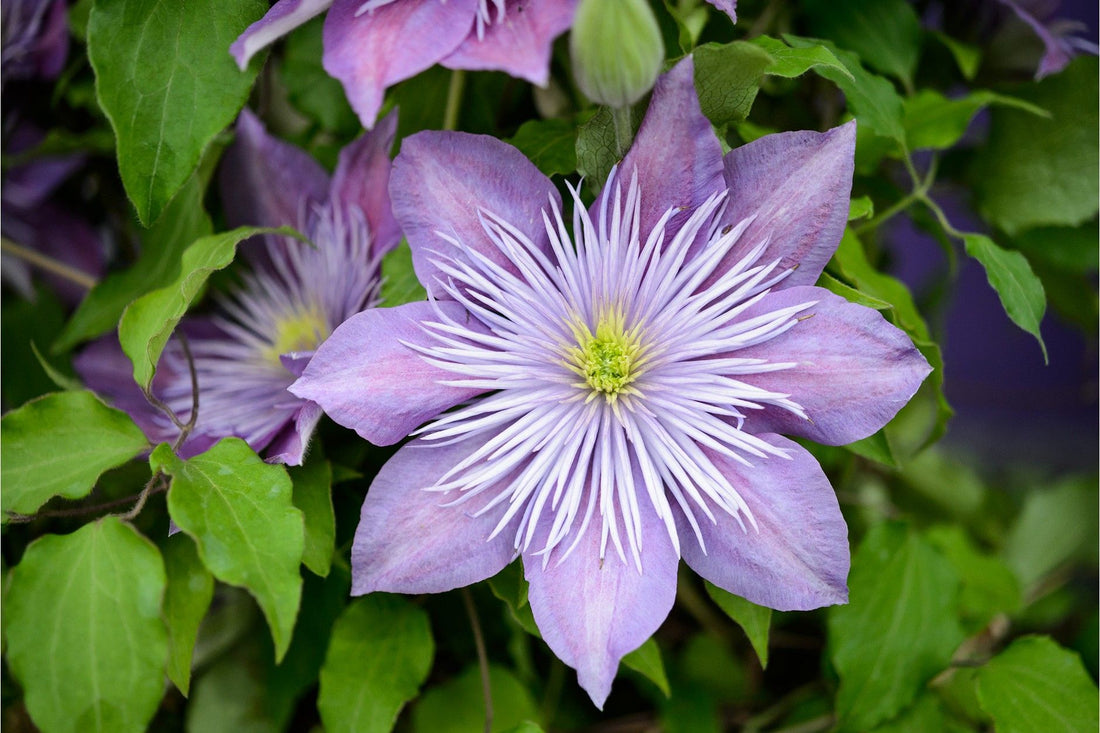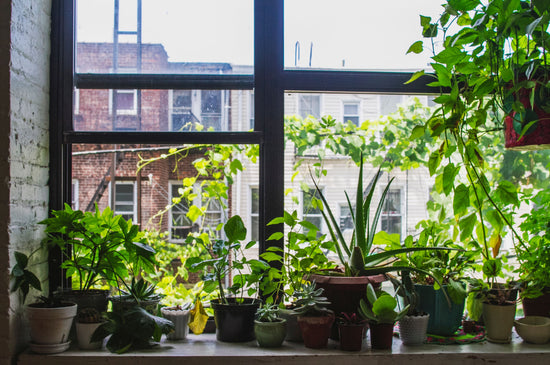What Clematis Is Best for Shade
Shade doesn’t mean you have to miss out on the beauty of clematis vines. While most clematis varieties thrive in full sun, there are several types that adapt beautifully to partial or dappled shade, producing vibrant flowers and lush foliage even in low-light conditions. Choosing the right shade-tolerant clematis and following a few care tips can transform a shady corner into a stunning display. Browse our Clematis Collection to find the perfect variety for your garden.

Characteristics of Shade-Tolerant Clematis
- Partial Shade Adaptability: These varieties thrive with 3–6 hours of indirect or filtered sunlight daily.
- Cooler Growth Conditions: They perform well in cooler, shaded environments, making them ideal for north-facing walls or woodland gardens.
- Unique Flowers: Many shade-loving clematis varieties feature delicate blooms and softer colors that shine in low-light settings.
Best Clematis Varieties for Shade
-
- Description: A hardy, early-flowering clematis with nodding, bell-shaped blooms in shades of blue, pink, or white.
- Bloom Time: Early spring.
- Height: 6–10 feet.
- Best Use: Perfect for small trellises, woodland gardens, or walls.
-
Clematis macropetala
- Description: Similar to Clematis alpina, this variety produces semi-double or double bell-shaped flowers in pastel tones.
- Bloom Time: Mid to late spring.
- Height: 8–12 feet.
- Best Use: Adds charm to shaded fences, pergolas, or climbing through shrubs.
-
- Description: A vigorous climber with masses of pale pink, fragrant flowers in late spring. It thrives in cooler, shadier spots.
- Bloom Time: Late spring to early summer.
- Height: 20–30 feet.
- Best Use: Ideal for covering walls, fences, or large trellises in shaded areas.
-
- Description: Known for its striking pink blooms with darker pink stripes, this variety performs exceptionally well in partial shade.
- Bloom Time: Late spring with a second bloom in late summer.
- Height: 8–12 feet.
- Best Use: Versatile for trellises, fences, or shaded garden corners.
-
- Description: Featuring large, silvery-lavender blooms, this clematis adds elegance to shady spaces.
- Bloom Time: Early to mid-summer.
- Height: 6–10 feet.
- Best Use: Works beautifully on shaded walls or fences.
How to Grow Clematis in Shade
-
Provide Morning Sunlight
- Even shade-tolerant clematis benefit from a few hours of morning light for optimal growth and blooms.
-
Ensure Well-Draining Soil
- Use rich, well-draining soil with added compost to improve fertility. Mulching helps retain moisture in shaded areas.
-
Plant the Crown Deeply
- Bury the crown 2–3 inches below the soil surface during planting to protect it from temperature fluctuations.
-
Fertilize Regularly
- Apply a balanced fertilizer in early spring and mid-season to support healthy growth and abundant flowering.
-
Prune Correctly
- Most shade-tolerant clematis belong to Group 1 or Group 2, which require minimal or moderate pruning.
Find more shade-loving clematis varieties in our Clematis Collection and transform your low-light garden into a vibrant oasis.

FAQ: What Clematis Is Best for Shade?
Q: Will shade-tolerant clematis bloom as much as sun-loving varieties?
A: Shade-tolerant clematis may produce fewer flowers, but their blooms remain vibrant and eye-catching in low-light conditions.
Q: Can clematis grow in full shade?
A: While some varieties tolerate very low light, most shade-tolerant clematis require at least a few hours of indirect sunlight to thrive.
Q: How do I prevent fungal diseases in shaded clematis?
A: Ensure good air circulation around the plant, avoid overwatering, and plant in well-draining soil.
Q: Are shade-tolerant clematis good for containers?
A: Yes, compact varieties like Clematis alpina and Clematis ‘Nelly Moser’ can thrive in shaded container gardens.





